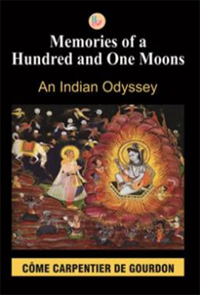| Ethiopia , Africa ’s India |
An illustrated lecture by Come Carpentier, Convenor, World Affairs: Journal of International Issues Chair: Dr. Raghuraj Singh Chauhan, Acting Director, The National Museum
Mr. Carpentier will make a presentation on the history and culture of Ethiopia with special reference to her relations with India over the centuries. For the ancient Greeks and Medieval geographers and mythologists, Ethiopia was a part of India and the two countries were often regarded as indistinguishable
Côme Carpentier de Bourdon chose to bring to the attention of the audience the fact that for a long time India and Ethiopia had been considered as one and the same land, especially during antiquity but even later, at least till the end of the 15th century, through the legend of Prestor John. Though based on a lack of geographical knowledge, this creed was supported by strong and longstanding relationships between India and Ethiopia , which lasted at least until 1948 and till the integration of princely states ruled by former descendants of Ethiopian slaves.
One notion that is shared concerning these two regions of the world is that they represent the cradles of mankind or of civilization. In the case of Ethiopia , the excavations of the earliest specimen of human beings confirm this idea. The speaker gave more detailed explanations, through the numerous antique sources (around fifty), from the Old Testament and the Greek and Latin texts, in which India and Ethiopia were either assimilated or described as contiguous or in which some links of various nature (geographic, ethnic or linguistic) between the two regions were underlined. One among many of those sources supporting this notion of closeness if not sameness is the Periplus which calls the south of India ‘India Erythrea’.
In those two regions, the streams were playing a central role, through the Ganga end the Nile , both harboring crocodiles as well as hippopotamus. Some geographers even believed that the Nile and the Indus had the same source. The number of occurrences quoting some relations between India and Ethiopia reveal the complex and deep-rooted relations between the various parts of the Indian Ocean , including the countries bordering the Arabian Sea and the Persian Gulf . Archaeological excavations as well as comparative studies in religion and literature show a constant traffic of ideas and products. Come C. de Bourdon started his introduction by reminding the audience that it is only after the European arrival that this economically and culturally rich region of the word started to be fragmented and the exchanges began to decline. He gave then an illustrated account of his recent visit to Ethiopia and focused particularly on two great enigmas of humanity linked to this country: the Ark of the Covenant and the Book of Enoch, at the meeting point between art, architecture, history and legends. Archaeological artifacts are still there to dive into these myths, taking the traveller to the formative period of the antique and medieval civilizations of Europe , the Middle East and the Near East . The speaker particularly drew attention to the cave-church tradition of Ehtiopia, which might have some relations with the cave-temple in India . Another common legacy might be detected in the ascetic traditions still surviving in both countries.
If one has the opportunity to visit the Etruscan site of Palestrina, in Italy , about sixty kilometers from on the hills of Lazio, the beauty of a mosaic depicting the Nile might bewilder one. Anyone familiar with India would notice striking similarities with scenes of the peninsular countryside. Considering that an Egyptian artist is the author this mosaic, one cannot consider those similarities as only part of fantasist geography but as the result of long-standing relationships between India and Ethiopia.
Traveller accounts from the end of the Middle Age in Europe reflect this confusion between Ethiopia and India, whether it is the Travels of Marco Polo or The Vicissitudes of Fortune, an account of his later Venetian counterpart, Nicolo de Conti. This confusion was nevertheless supported not only by links of mythological natures but renewed through actual exchanges and migrations until very recent times. Those exchanges are easy to apprehend in an economy where sea connectivity was playing a central role, various ships sailing every week between the two coasts.
The question of the relations between India, on the one hand, and Ethiopia, and even Egypt and the Southern Arabia, offers great scope for comparative studies and an alternative understanding of history. Though Ethiopia has gone through various changes of religion, its population being divided almost equally between Christians and Muslims, an Ethiopian ethos seem to have remained and the country still offers an opportunity to observe traditions at least as old as the early Christian period.
India International Centre wishes to promote online discussions on programme topics reviewed on its website. Readers may send comments on the above topic.
Reader’s comments will be put on this page, below the review. In the event of a query, this will be forwarded to the speaker or reviewer for further comment, before being placed on this page.
Review by – Dr. Samuel Berthet (Center de Science Humains, Delhi)

